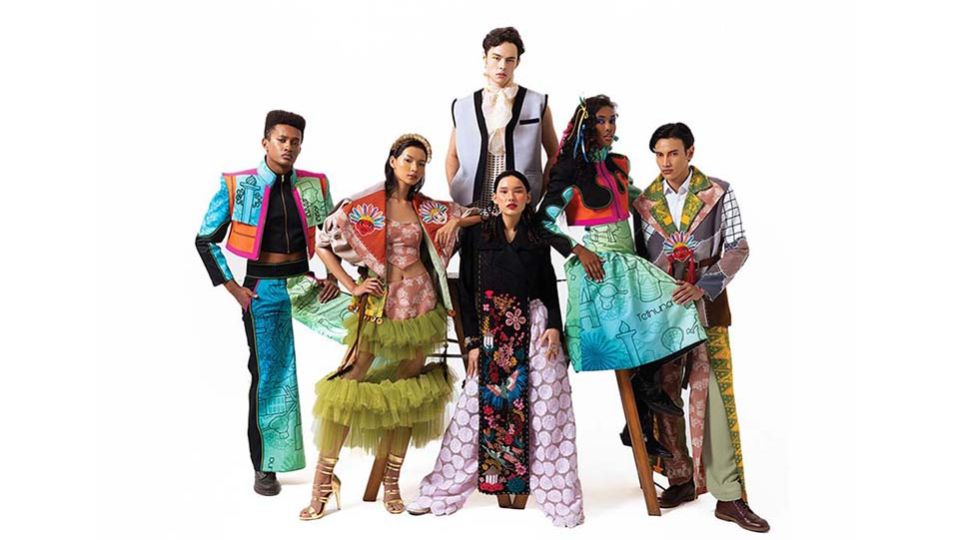July 1, 2024
JAKARTA – On the runway at this year’s Betawi-themed Indonesia Fashion Week (IFW), models presented pieces inspired by the Chinese cheongsam, Dutch designs and colorful Betawi motifs.
Since the show aims to put the spotlight on the rich culture of the Betawi people, the native inhabitants of Greater Jakarta, the mix of cultures can prompt one to ask: What exactly is Betawi fashion?
Defining Betawi fashion
“It can be said that it is a blend of various cultures from Indonesia and also influences from outside, whether Chinese or European. So that’s what I see as Betawi culture,” said Misan Kopaka, the man behind Kopaka Bridal by Misan.
During the IFW, which ran from March 27 to 31 at the Jakarta Convention Center, he dressed his models in vibrant, bold orange creations bearing motifs from Betawi culture, such as delman (two-wheeled, horse-drawn cart) and ondel-ondel(costumed puppet performance).
To balance the varied influences in Betawi culture, Misan added some pieces reminiscent of the cheongsam, which entered latter-day Jakarta courtesy of Chinese migrants, as well as European styles that the Dutch brought with them.
For women, he said the most authentic Betawi was kebaya encim, a traditional blouse with Chinese influences. Unlike the kebaya of other Indonesian cultures, the Betawi kebaya has a characteristically looser fit and a rounded collar.
As for what deems a particular piece of clothing as “Betawi fashion”, Misan says it is the materials used.
“So what we used that made people go, ‘Oh, that’s Betawi,’ was the batik. The fabric and the motifs are what differentiate which region we wanted to [present].”
Batik is a quintessentially Indonesian textile. According to a 2015 study by the Bandung Fe Institute and Sobat Budaya, Indonesia is home to at least 5,849 batik motifs from Aceh to Papua.
Read also: Pre-loved is the new new: A tale of style, sustainability and luxury
Cultural stories
Naniek Rachmat has many stories related to culture through the batik she created for her brand, Nanie Rachmat.
At IFW 2024, Naniek emphasized Betawi motifs in splashes of red and white, paired with blue accents and denim, creating the perfect summer collection.
The stories of the Betawi people are told in the motifs of modern-day skyscrapers, mixed with yesteryear’s coconut trees and ondel-ondel, which seems to be the one cultural thread running through her designs.
“Having ondel-ondel on the fabric is meant to exorcize the devil. In Betawi culture, if you use the imagery of ondel-ondel, it means the devil will run away, that’s the story,” Naniek explained.
This also pointed to the folk beliefs that Indonesians still clung to as yet another element passed down through the generations.
Naniek’s designs are also infused with the mixed influence in Betawi culture, presented by three elements: blue symbolizes the coast and the flowers that bloom near the sea to represent Chinese traders, the delicate white lace is modeled after the dresses worn by colonial Dutch women, while batik represents Indonesia.
Read also: Stations, stops and superlatives: Public transport destinations in Jakarta worth exploring
Contemporary vision
“At first, it started with batik tulis [hand-drawn batik] and kain wastra [traditional textiles],” said designer Yogiswari “Yogi” Pradjanti. “It is definitely not easy crafting such a process alone.”
The Jakarta-based designer of ready-to-wear creations is primarily known for her pieces bearing illustrated figures representing the diverse cultures of Indonesia.
In her latest collection, Yogi highlights Betawi culture in a modern take, adorned with delicate silhouettes and bold colors to reflect the varied influence in the region where Jakarta was founded.
Her passion for the vibrancy of life is heavily inspired by her travels and has resulted in many of her illustrations being about making connections. And in using cheery colors for each piece to brighten up their wearer, Yogi wants people to feel joie de vivre.
“Back then, I actually refused to use dark colors! It just didn’t feel good,” she said of her design process.
“I want the people wearing my clothes to have an aura of happiness,” added Yogi, who believes using colors is in itself a source of inspiration in creating art.
“Colors make me happy! I always want to create when I feel good.”
Emotional connection is also an integral part of the feeling other designers are trying to evoke in their customers.
Naniek said the batik she used in her creations was entirely handmade.
Using cotton and linen, batik as art adds greater value to clothing and in the way it feels on skin, smelling of wax, as well as in its authentic appearance.
She also took great care in adding a modern twist to her pieces so they would be desirable to a younger audience, such as by making crop tops, denim creations and bucket hats. Naniek said she always made sure to follow the current trend to avoid her designs coming across as “too ethnic”.
But Misan pointed out that designers needed to find the perfect balance between current trends and traditional elements fromIndonesian culture.
“That’s one of the things that differentiates us from [other countries]. By using our culture, we can be the part that can lift us higher than them, because it’s a culture they don’t have but we do. That’s why we have to explore what Indonesia has, so that outside eyes can see it,” he said.
Read also: Five questions for modest fashion influencer Mega Iskanti


